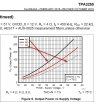Thanks for your explanation. More to read!That's not what "The G Word" says. The 'Pin 1 Problem' is explicitly about differential inputs and the problem created when manufacturers do the wrong thing with ground, removing the immunity from ground related noise that differential inputs ought to have. "The G Word" explains how this happens and how designers can avoid it. AES48 is a standard created to try to get manufacturers to consistently do it properly.
The essence of it is to make sure stray ground currents from loops or leakage are directed away from your audio signal. The suggested way to do this is to connect pin 1 to the metal chassis, and not to connect it to the board inside the chassis. The chassis provides a path for the ground currents, and you don't create an alternative path through the board. Using wires instead of the chassis should work, and may be your only option if the chassis is insulating (wood, plastic).
Connecting Pin 1 to the board may or may not be a problem depending on how well the manufacturer has handled routing on the board. Note the bit in "The G Word" about workarounds to make the PCB routing software route a critical part of the circuit the way the designer intended so that it would not be affected by stray ground currents.
Measurements will only show a difference if you have a ground related noise issue when measuring. See section 3.3 of https://www.jensen-transformers.com/application-notes/ AN007 for a way of introducing ground noise so you can check whether what you have done is really immune. That app note has in depth coverage of the causes of ground related noise issues, and a systematic method for solving them.
English is not my first language so maybe I wrongly understand this sentence from "The G Word". Or it could be very well that I don't understand what is meant by the "differential method". This 3e board is PFFB fully differential as said in this thread name. Not the same thing?


